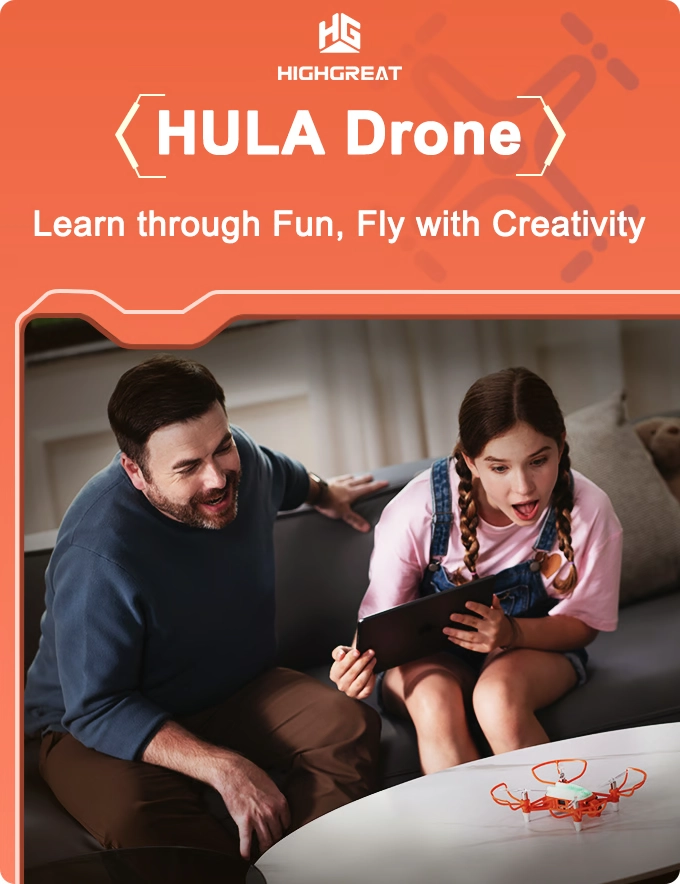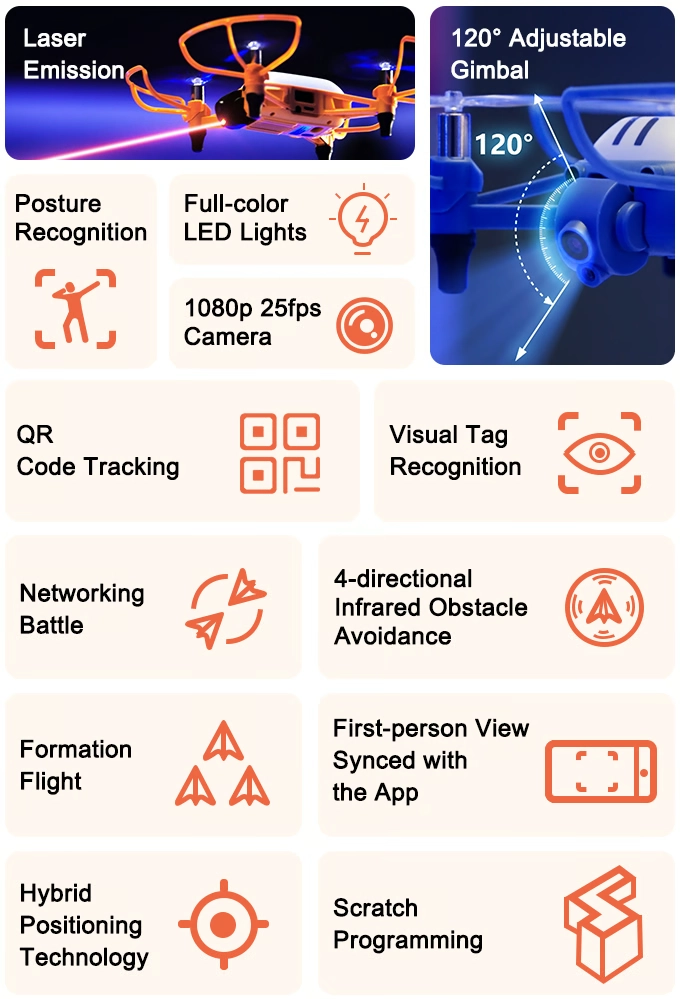The Future of Education: HULA Programmable Drones for Schools
In recent years, educational technology has taken a giant leap into the realm of robotics and programming reshaping STEM (Science, Technology, Engineering and Math) education. One of the notable innovations is the introduction of HULA drones. These small, versatile and user-friendly drones are turning classrooms into hubs for creativity, critical thinking and hands-on learning. In this blog post, Highgreat, an exporter of HULA drones, will share the significance of high quality programmable drones for schools.
What Are HULA Programmable Drones?
HULA programmable drones are cutting-edge educational tools designed specifically for students to learn the principles of coding, robotics, and engineering. Unlike traditional drones meant for professional use or recreational flying, HULA drones focus on programmability, making them an excellent tool for teaching students how to write code and see it come to life.
These drones come with an intuitive software platform, allowing students to control flight paths, perform aerial maneuvers, and even collaborate on group projects - all through code. From basic block-based programming suitable for younger students to advanced Python or JavaScript coding for high schoolers, HULA drones cater to various skill levels and age groups.

Why Should Schools Embrace HULA Programmable Drones?
The incorporation of drones into education is more than a trend; it' s a forward-thinking approach to engaging students in STEM disciplines. Here are several reasons why schools should consider adding HULA programmable drones to their curriculum:
1. Promoting Hands-On Learning
HULA drones provide an interactive way for students to learn by doing. Unlike traditional lectures or textbook-based learning, these drones allow students to test their knowledge in real-time. For example, a coding lesson turns into a thrilling exercise as students program their drones to fly in specific patterns, such as circles, figure-eights, or even obstacle courses.
2. Enhancing Problem-Solving Skills
When programming a drone, students are bound to encounter challenges - whether it' s debugging code or adjusting flight paths. These experiences teach valuable problem-solving skills and resilience as students learn to analyze errors, find solutions, and refine their approach.
3. Encouraging Teamwork and Collaboration
HULA programmable drones encourage collaboration by enabling group projects. For instance, students can work in teams to design and execute a drone-based rescue mission simulation or a delivery system. This not only improves their technical skills but also fosters communication, leadership, and teamwork.
4. Bridging the Gender Gap in STEM
Historically, STEM fields have faced a gender disparity, but tools like HULA drones can help close this gap. The hands-on, creative aspects of drone programming often appeal to a broader range of students, including those who might not have considered a STEM career. By integrating such tools into the classroom, educators can inspire a more diverse group of learners to pursue interests in technology and engineering.
5. Preparing Students for the Future
Drones are no longer just futuristic gadgets; they are becoming integral to industries like agriculture, logistics, filmmaking, and disaster management. By learning to program drones, students gain skills that could be highly relevant in their future careers. HULA drones ensure that students are not just consumers of technology but creators and innovators.

How Schools Can Integrate HULA Drones into Their Curriculum
Incorporating HULA programmable drones into the curriculum doesn' t require overhauling the entire educational structure. Here are a few ways schools can seamlessly introduce this technology:
1. STEM Clubs and Extracurricular Activities
HULA drones are perfect for after-school clubs or STEM-focused extracurricular programs. Students can work on projects like drone racing, building obstacle courses, or even creating artistic aerial displays.
2. Interdisciplinary Learning
Drones can also be used in subjects outside STEM. For instance, geography lessons can involve mapping terrain using drone footage, while art classes can experiment with drone-assisted photography. This integration encourages students to see connections between disciplines.
3. Competitions and Showcases
Hosting drone programming competitions within schools or between institutions can motivate students to excel. Events like these provide an exciting platform for students to showcase their skills, share ideas, and learn from peers.
4. Teacher Training
To make the most of HULA programmable drones, schools should invest in training teachers to use them effectively. Many drone manufacturers, including HULA, offer professional development programs to help educators design lesson plans and troubleshoot issues.
As we look toward the future of education, one thing is clear: the sky is no longer the limit - it' s just the beginning. With HULA programmable drones for schools, educators can empower students to take flight into a world of endless possibilities.

 Telephone No.Email
Telephone No.EmailMailbox number:marketing@hg-fly.com



